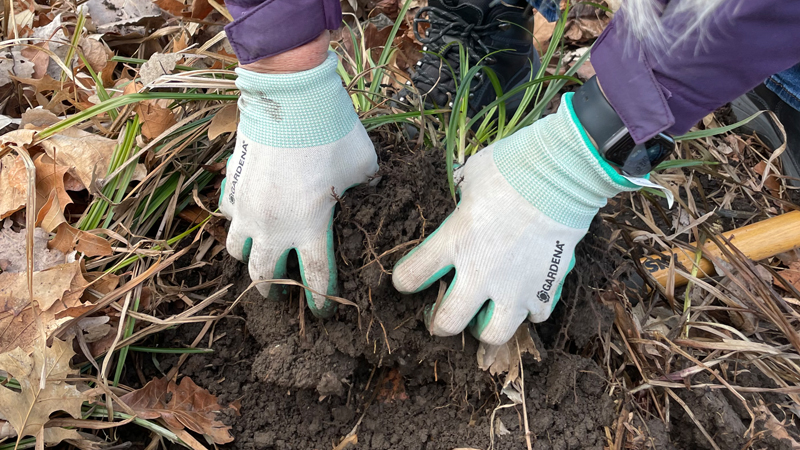
By: Josie Cummings and Thomas Kennedy-Croft; Photo by Cydney Ross
In partnership with Rockhurst University, Writing for the Environment students have authored this month’s Introduction to Native Plant Gardening Beginning / Refresher Garden Series article.
When ordinary people refer to the brown, mineral-filled substance which holds plants, they call it dirt. Plant lovers call it soil. Dirt is what you track in after working in the garden, while soil is full of living organisms and structured layers. The living structure of soil makes it incredibly valuable as a medium for plants. Unfortunately, in the United States we are losing soil 10 times faster than it is being replenished, a situation that is obviously not sustainable. People can counteract this soil loss by learning about and supporting healthy soil systems.
Plants, fungus, and bacteria have co-evolved a symbiotic relationship in the soil. Plants rely on bacterial and fungal networks within the soil to receive the nutrients and minerals they need to thrive. Healthy plants help put carbon back into soil, which fights climate change. Their root systems filter stormwater, helping prevent erosion and flooding. Although this system may not be intact in many yards, we can support the development of healthy soils.
How do we do it? By using a diversity of perennial plants (those that return every year). Perennials have roots that remain alive even in the cold winter months, which is beneficial for your soil. These roots support the soil system and decrease erosion. Something that covers bare soil, like compost, an appropriate wood mulch, or living mulch, protects it from wind and erosion and helps regulate its temperature. Plant diversity is important because a wide variety of plant species have root diversity as well; some roots are deep, some short, some wide, and some narrow. Diverse plants also attract a diversity of birds and insects which bring additional nutrients, excretions, and dead insects add nutrients. Reducing soil disturbance is crucial. While at times disturbance can be necessary, it also leads to consequences: carbon escapes exposed soil and disturbances can cause the death of beneficial microorganisms. Lastly, one of the principles that can make planting so fun is that healthy plants in healthy soil attract a wide variety of wildlife!
Healthy soil is important and can affect the environment in so many nuanced ways that a soil health checklist can get you started! Remember to:
- Increase the diversity of plants, with a focus on native species.
- Add biological factors, such as compost tea and mycorrhizae.
- Protect the soil with mulch and consider a living mulch as groundcover.
- Minimize disturbance.
The most important thing to remember when working with your soil is to not give up. Soil health can turn around quickly. Want to learn more about “Digging up the Dirt on Healthy Soils”? Take a moment and watch episode two of our Beginner/Refresher Native Plant Gardening Webinar Series. It is a five-part series that stresses the importance of native plants. It will let you know how to get started and maintain a native plant garden. Stay tuned as over the next few months we will provide a synopsis of each episode. You can view each episode in its entirety on the Deep Roots website.







